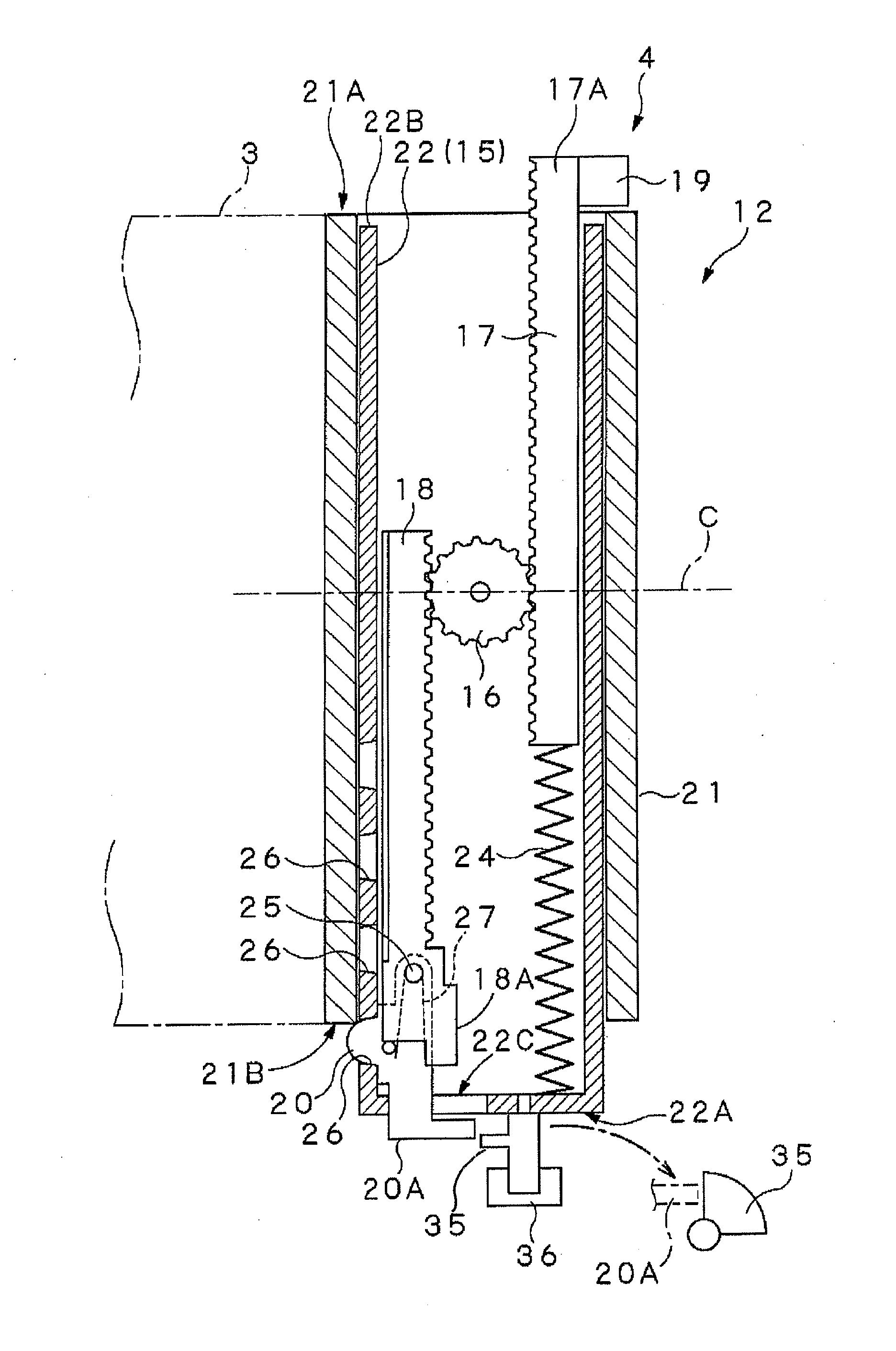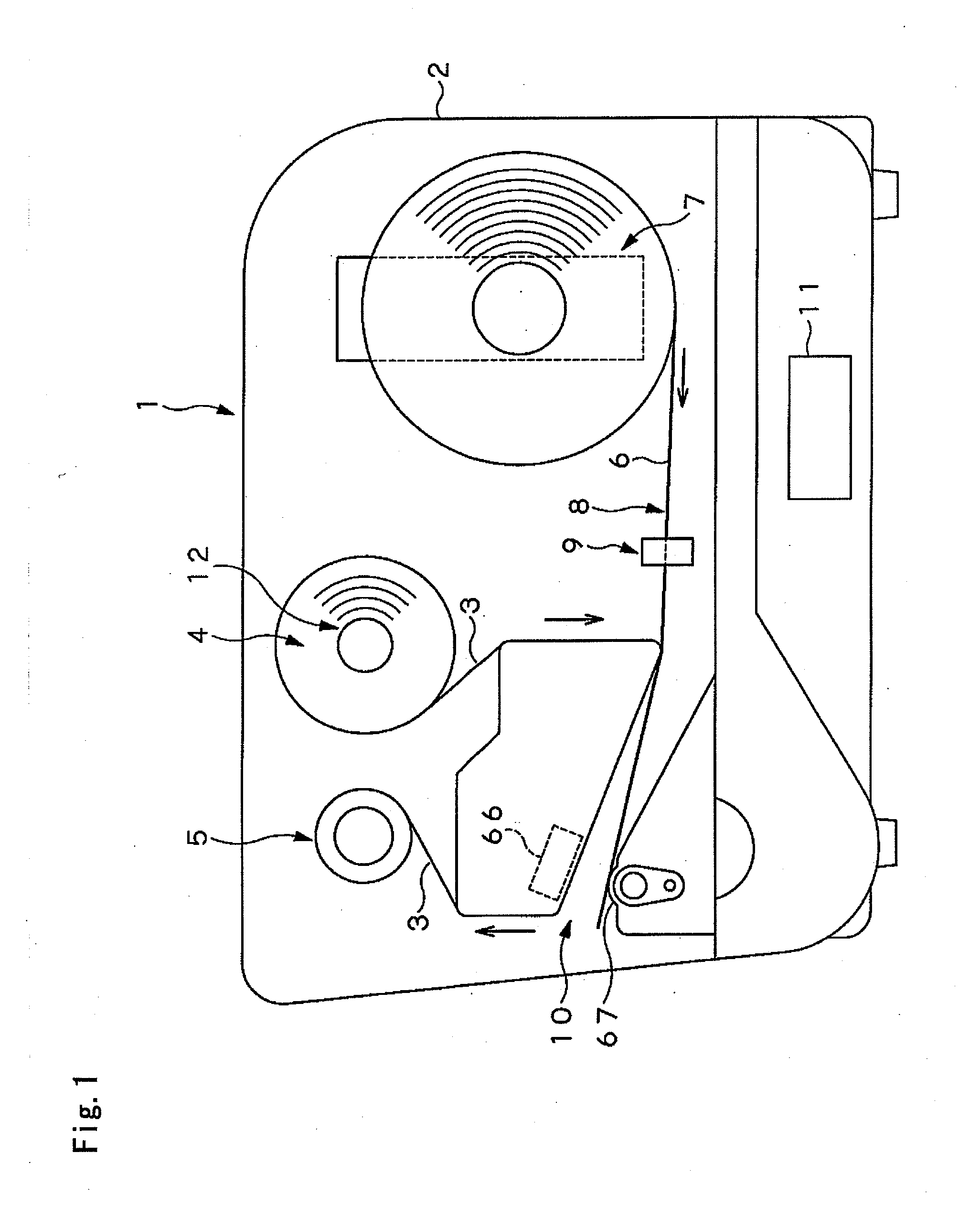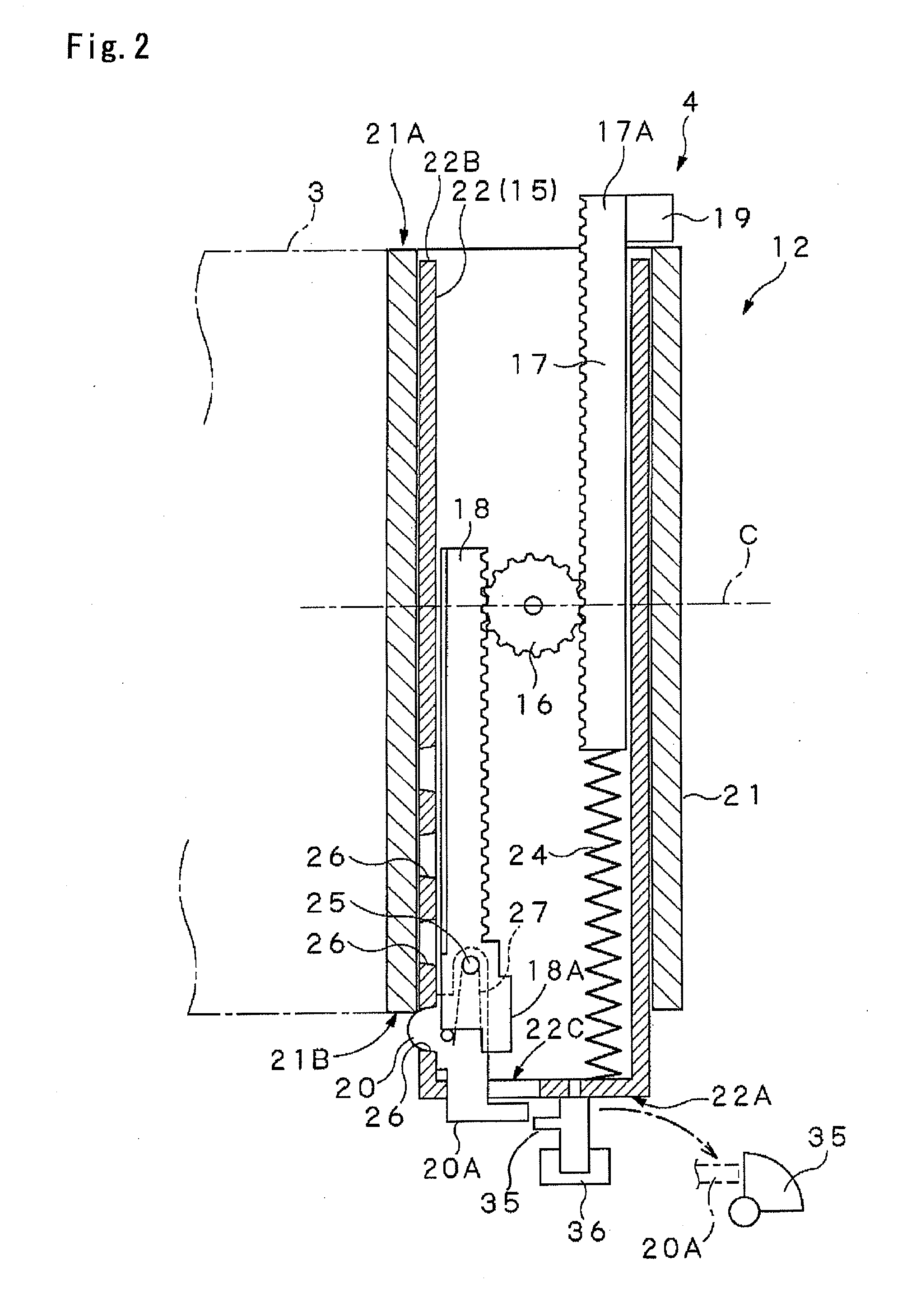Aligning device for printing member in printer
- Summary
- Abstract
- Description
- Claims
- Application Information
AI Technical Summary
Benefits of technology
Problems solved by technology
Method used
Image
Examples
embodiment
[0039]The following describes the aligning device for the printing member in the printer according to an embodiment of the present invention with reference to FIG. 1 through FIG. 10, taking a thermal transfer ribbon and a continuous label body as examples of the printing member.
[0040]FIG. 1 is a side view schematically illustrating the printer (thermal printer 1). The thermal printer 1 is provided with a printer housing 2, a supplying unit 4 configured to hold a rolled thermal transfer ribbon 3 in a one-end supporting manner, a winding unit 5 for the thermal transfer ribbon 3, a supplying unit 7 configured to hold a rolled continuous label body 6 in the one-end supporting manner, a transfer path 8, a label guiding unit 9 disposed in the middle of the transfer path 8, a printing unit 10, and a controlling unit 11.
[0041]In the printer housing 2, the thermal transfer ribbon 3 is held by the supplying unit 4 in the one-end supporting manner, and the continuous label body 6 is held by th...
PUM
 Login to View More
Login to View More Abstract
Description
Claims
Application Information
 Login to View More
Login to View More - R&D
- Intellectual Property
- Life Sciences
- Materials
- Tech Scout
- Unparalleled Data Quality
- Higher Quality Content
- 60% Fewer Hallucinations
Browse by: Latest US Patents, China's latest patents, Technical Efficacy Thesaurus, Application Domain, Technology Topic, Popular Technical Reports.
© 2025 PatSnap. All rights reserved.Legal|Privacy policy|Modern Slavery Act Transparency Statement|Sitemap|About US| Contact US: help@patsnap.com



